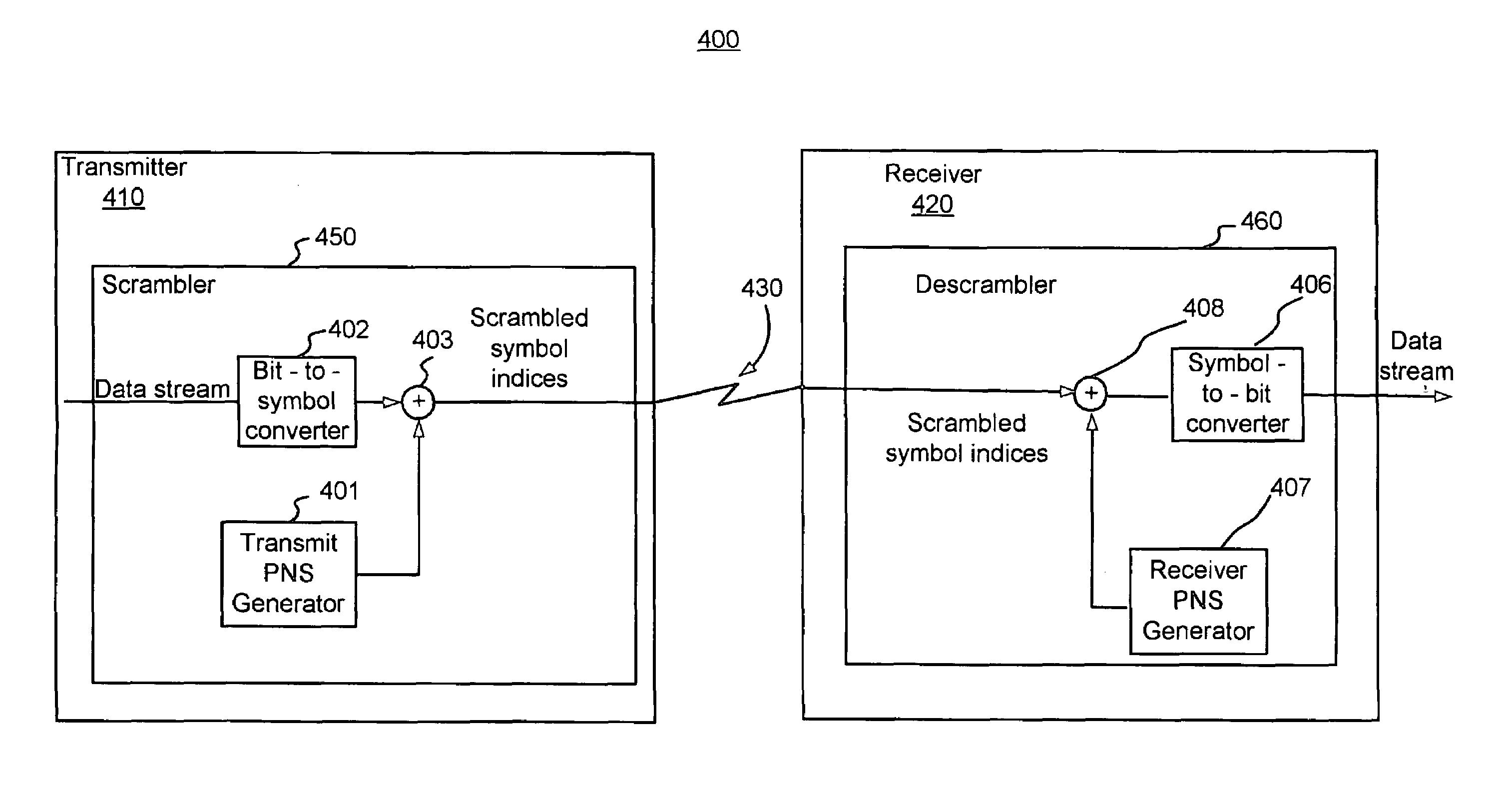Communication device and method for using non-self-synchronizing scrambling in a communication system
a communication system and non-self-synchronization technology, applied in the field of communication systems, can solve the problems of s3 suffering from the disadvantage of multiplying the number of errors and prolonging the duration of errors, s3 is particularly pronounced, and the number of errors may be increased and extended, so as to improve the performance of the communication system, eliminate the disadvantage of error multiplication inherent, and maintain synchronization
- Summary
- Abstract
- Description
- Claims
- Application Information
AI Technical Summary
Benefits of technology
Problems solved by technology
Method used
Image
Examples
Embodiment Construction
[0038]FIG. 4 is a simplified schematic diagram of an NS3 communication system in accordance with the present invention. System 400 includes transmitter 410, which includes scrambler 450, and receiver 420, which includes descrambler 460. Transmitter 410 transmits data to receiver 420 over communication medium 430.
[0039]In a conventional NS3 application, the output of the transmit PNS generator typically is modulo-2 added one bit at a time to the digital data stream being transmitted, which is typically a serial bit stream. However, in system 400 of FIG. 4, the digital data stream is first converted from bits to a set of symbol indices by bit-to-symbol converter 402 prior to being scrambled. Each symbol index is typically used to select an element from the symbol alphabet to be used for transmission. For example, in the commonly used quadrature amplitude modulation (QAM) technique, the index is used to select the amplitudes for the in-phase and quadrature pulses to provide the two inp...
PUM
 Login to View More
Login to View More Abstract
Description
Claims
Application Information
 Login to View More
Login to View More - R&D
- Intellectual Property
- Life Sciences
- Materials
- Tech Scout
- Unparalleled Data Quality
- Higher Quality Content
- 60% Fewer Hallucinations
Browse by: Latest US Patents, China's latest patents, Technical Efficacy Thesaurus, Application Domain, Technology Topic, Popular Technical Reports.
© 2025 PatSnap. All rights reserved.Legal|Privacy policy|Modern Slavery Act Transparency Statement|Sitemap|About US| Contact US: help@patsnap.com



